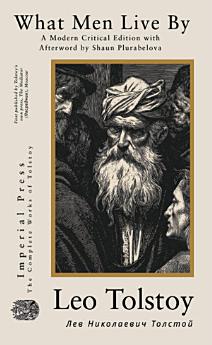What Men Live By
Acerca de este libro electrónico
"What Men Live By," or "Чем люди живы" in Russian, was published in 1881. This philosophical parable, sometimes known by its German title "Wovon die Menschen leben," delves into the spiritual and eternal values that underpin human life, drawing directly from biblical principles. The story recounts the experience of Semyon, a poor shoemaker, who discovers a naked stranger, Mikhailo, by the roadside and, despite his own destitution, brings him home.
Mikhailo, who is an angel sent by God to collect a woman's soul but returns without it out of pity, becomes Semyon's apprentice. God then tasks Mikhailo with answering three questions: "What is in people?", "What is not given to people?", and "What do people live by?". Through his observations, Mikhailo ultimately comprehends that humans do not subsist on selfish self-interest but on cooperation and, above all, on love, which resides within them. This work, part of Tolstoy's "folk tales" and "People's Reading" project, reflects his intense turn to religious questions from 1879 onwards, emphasizing neighborly love and non-resistance to evil .
This critical reader's edition presents a modern translation of the original manuscript, crafted for the modern reader with clean, contemporary language and simplified sentence structures that clarify his complex Russian phrasing and specific antiquated references. Supplementary material enriches the text with autobiographical, historical, and linguistic context, including an afterword by the translator on Tolstoy’s personal history, impact, and intellectual legacy, an index of the philosophical concepts he employs—emphasizing Existentialism and influence by Schopenhauer—a comprehensive chronological list of his published writings, and a detailed timeline of his life, highlighting the personal relationships that shaped his philosophy.











